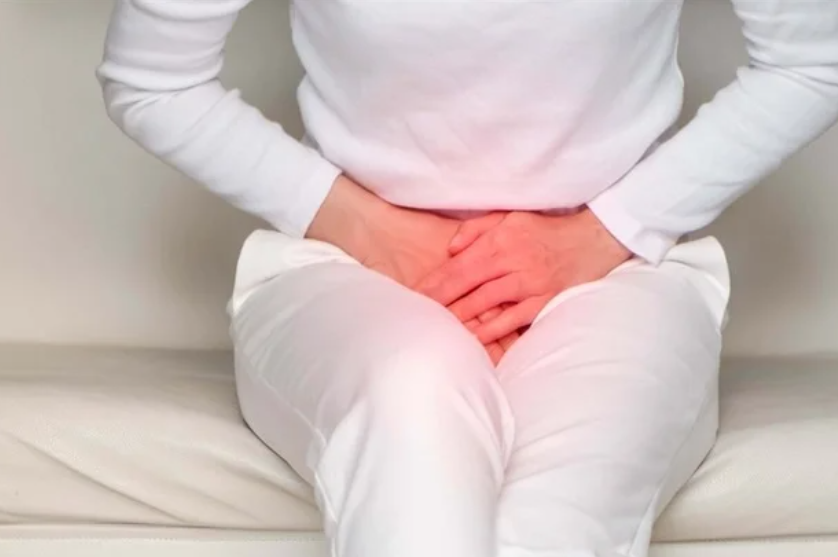Stress urinary incontinence is a condition where urine leaks out with sudden pressure from the bladder and urethra. When SUI is mild, forceful activities like exercise, playing sports, coughing, sneezing, and laughing cause pressure. When there is severe SUI, less forceful activities like walking, standing up, and turning the body can cause that pressure.
Stress urinary incontinence is a common type of urinary incontinence in women.
Overactive Bladder(OAB) or Urgency Urinary Incontinence(UII) is another common bladder problem. Urinary incontinence is a situation where a person feels a sudden urge to urinate but leaks a few drops before reaching the restroom.
SUI is related to the urethral problem and OAB is a bladder problem. Mixed Incontinence is a condition where both conditions occur simultaneously.

Symptoms
The symptom of SUI is urine leakage due to the pressure applied to the abdomen. The leakage can be a few drops or more. Depending on the level of SUI, urine leakage can happen due to exercise, playing a sport, laughing, sneezing, or any activity that applies pressure on the abdomen.
Causes
SUI can occur due to damage in the pelvic floor muscles. These muscles support the bladder and urethra. SUI mainly occurs in people having lower levels of Type 1 and Type 3 collagen. For women after menopause, estrogen level drops which further depletes the level of collagen. This reduces the strength of the pelvis region.
Some of the risk factors that cause SUI are,
- Smoking
- Overweight
- Chronic coughing
- Nerve injury in the lower back
- Pelvic surgery
- Pregnancy and childbirth
- Vaginal delivery
- Aging
Treatment
There is both surgical and non-surgical method of treatment for stress urinary incontinence.
Not all women need to undergo surgery. It depends on factors like the severity of the symptom and their effect on a day-to-day basis.
Some of the common treatments for SUI are bladder training, pelvic floor exercises, lifestyle changes, and surgical and non-surgical treatments.
Non-surgical treatment options
Laser Therapy
Laser therapy is a non-invasive procedure to treat urinary incontinence. It is a short-time, non-invasive and low-cost procedure. It is a good and effective option but the side effects of the procedure are unknown.
The procedure of laser therapy
A pulsed laser beam is passed on the pelvic region which improves the collagen structure and the production of new collagen in the pelvis region. Tissue temperature is increased to 63-degree celsius.
The following are the effects,
1. Improved collagen production.
2. The inner lining of the vagina contracts.
3. Enhances the cells that synthesize collagen.
4. Creation of new blood vessels.
5. Creation and development of elastic tissue.
Specific laser devices are used to strengthen the tissues inside the vagina and to enhance pelvic floor support.
Benefits of Laser treatment
- Lower risk of injuring other pelvic organs
- General anesthesia is not required.
- Treatment completes within a short period.
It is recommended to avoid any sexual activity post 3 days to avoid any inflammatory reaction.
Electrical Stimulation
Electrical stimulation is a process of giving mild electric current to the nerves at the lower back or in the pelvic muscles related to urination.
In-House electrical stimulation treatement
This therapy can be done at home using a vaginal or anal electrode. This treatment may go on for 12 weeks. You can give 15 minutes of stimulation twice a day. This stimulation contracts the muscles and strengthens them. This provides similar effects to doing Kegel exercises.
Electrodes are placed under the skin through the legs or lower back and electrical stimulation is given to the bladder. This treatment is given for severe urge continence or overactive bladder.
Out-patient electrical stimulation treatment
The posterior tibial nerve stimulation (PTNS) procedure is performed by placing a small electrode probe inside the vagina . The stimulator pushes the pulse into the electrode which stimulates the nerve inside the leg. This electric current impacts the nerve in the lower back which controls the bladder and pelvic function.
V-Tone is one of the electrical muscle stimulation devices used to treat patients. The female body changes due to various factors like pregnancy, childbirth, menopause, aging, and hormonal changes. Due to this, pelvic muscles get impacted leading to stress urinary incontinence. V-Tone is a non-surgical, gentle FDA cleared technological device. V-tone has a two-sided tip that is inserted into the vaginal canal to provide maximum contractions. It is a quick, comfortable, and painless procedure. Which helps in the recovery of SUI
It is recommended to perform this therapy with experts. When done under proper guidance, it gives maximum results and reduces other side effects.
Radio Frequency Treatment
In this treatment, radio frequency energy is used which can penetrate deep into the tissue. This is a painless procedure and does not require any anesthesia or incision.
A special probe is placed inside the vagina and also on the urethra and periurethral tissue. Energy is applied in pulses for a couple of seconds. It will cause slight vibration and a warm feeling. The temperature of affected areas will reach 40- 45 C for 5 minutes. The whole period for this treatment is for 4 to 6 sittings depending up on the requirements
The RF energy reaches the nerves and vessels which stimulates local stem cells to produce fibroblasts, collagen, and elastin. It helps in the tightening of tissues and shortening of collagen fibers. Which helps in the vaginal tightening and sui fast recovery
